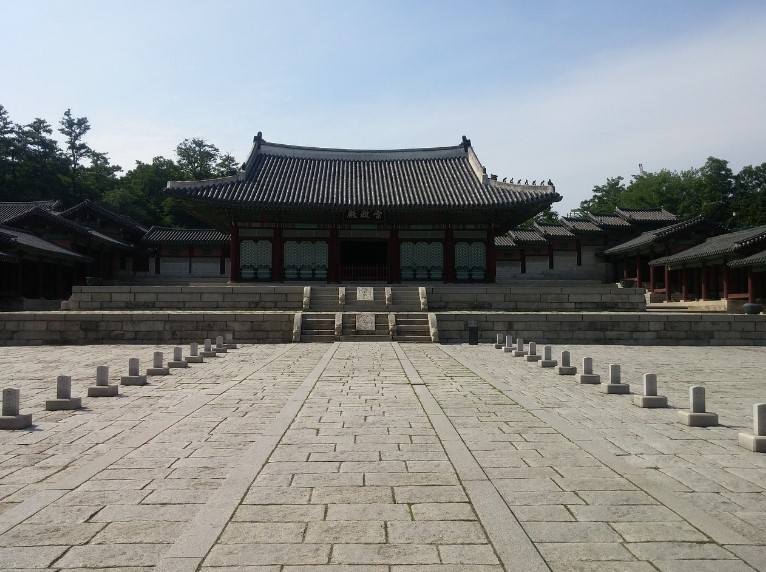Uncover the Hidden History of Gyeonghuigung Palace
Take the time to explore this lesser-known palace and appreciate its role in the history of Korea, along with the beautiful scenery that surrounds it. You won’t regret adding Gyeonghuigung to your list of must-see places in Seoul!

Gyeonghuigung Palace, often referred to as “the hidden palace,” is one of Seoul’s lesser-known royal palaces, but it has a rich history that makes it worth visiting. Nestled in the western part of central Seoul, Gyeonghuigung played an important role as a secondary royal residence during the Joseon Dynasty. Though smaller and quieter than its more famous counterparts, such as Gyeongbokgung and Changdeokgung, Gyeonghuigung offers a peaceful retreat and a unique glimpse into Korea’s royal past.
A Brief History
Gyeonghuigung, which means “Palace of Serene Harmony,” was built during the early 17th century as one of the “secondary palaces” or “detached palaces” for the kings of the Joseon Dynasty. A secondary palace served as a backup residence for the king in case of emergencies, such as invasions or fires. Gyeonghuigung was particularly favored by Joseon kings, as it was close to the main palace, Gyeongbokgung, allowing for easy movement between the two.
At its peak, Gyeonghuigung was a sprawling complex with over 100 buildings, including royal residences, pavilions, and administrative offices. However, like many historical sites in Korea, Gyeonghuigung suffered during the Japanese occupation. Most of the palace was dismantled to make way for modern development, leaving only fragments of the original structure intact. The palace has since undergone reconstruction, with several buildings restored to their former grandeur.
Today, Gyeonghuigung stands as a symbol of resilience and survival, offering a peaceful and less crowded alternative for visitors interested in Korean history.
Key Features and Highlights
1. Sungjeongjeon Hall (Throne Hall):
Sungjeongjeon is the main throne hall of Gyeonghuigung, where kings conducted important state affairs. Though the original structure was destroyed, the current hall has been faithfully restored based on historical records. It features traditional Korean architectural elements, such as its wooden frame and elegant tiled roof. Inside, you can see the simplicity and dignity that characterized royal spaces of the Joseon Dynasty.
2. Heunghwamun Gate:
The main entrance to the palace, Heunghwamun Gate, is another restored part of the palace complex. It faces the busy streets of Seoul, providing a striking contrast between modern city life and the ancient palace grounds. Walking through Heunghwamun feels like stepping back in time, away from the urban hustle and into a more peaceful era.
3. The Pavilion and Pond:
Like many traditional Korean palaces, Gyeonghuigung features a beautiful pavilion overlooking a serene pond. This area is perfect for a quiet walk or reflection, especially during the spring when cherry blossoms bloom or in autumn when the leaves turn vibrant shades of red and gold. The pavilion and pond offer a glimpse into the peaceful retreat this palace once provided to Joseon kings.
4. Seoul Museum of History and Gyeonghuigung Annex:
Adjacent to the palace grounds is the Seoul Museum of History, which provides context about the history of the city and the Joseon Dynasty. The museum’s Gyeonghuigung Annex features exhibits related specifically to the palace and royal life in Seoul. This makes Gyeonghuigung not only a historical site but also an educational experience, allowing visitors to deepen their understanding of Korean history.
Why Visit Gyeonghuigung?
1. Quiet and Less Crowded:
Unlike the more famous palaces in Seoul, Gyeonghuigung is often overlooked by tourists, making it an excellent place to escape the crowds and enjoy a peaceful exploration of Korea’s royal past. The serene atmosphere allows for a more reflective and relaxing experience compared to the busier Gyeongbokgung or Changdeokgung palaces.
2. Historical Significance:
While it may not have the grandeur of some of Seoul’s larger palaces, Gyeonghuigung was a key location for the Joseon kings, who used it as a refuge in times of crisis. Its role as a secondary palace made it essential to the functioning of the royal court. Visiting Gyeonghuigung offers a chance to learn more about the lesser-known aspects of Joseon history, especially during times of political instability.
3. Easy Access to Cultural Sites:
Gyeonghuigung is located near several other cultural landmarks in central Seoul. After visiting the palace, you can easily explore the nearby Seoul Museum of History, Gyeonghui Museum, or take a short walk to Deoksugung Palace and Seoul Plaza. The palace’s central location makes it a convenient stop on any cultural itinerary in the city.
4. Scenic Beauty in All Seasons:
While Gyeonghuigung is beautiful year-round, it’s particularly stunning in spring and autumn. The blooming cherry blossoms in spring and the fiery autumn foliage transform the palace grounds into a picturesque landscape, ideal for photography or simply enjoying the natural beauty.
Practical Information
- Location:
Gyeonghuigung Palace is located at 45 Saemunan-ro, Jongno-gu, Seoul, South Korea. It’s easily accessible by subway, with Seodaemun Station (Line 5, Exit 4) being the closest station, just a short walk away. - Opening Hours:
The palace is open from 9:00 AM to 6:00 PM (April to October) and 9:00 AM to 5:00 PM (November to March). The last admission is 30 minutes before closing. - Admission Fees:
Entry to Gyeonghuigung Palace is free, making it a budget-friendly option for those looking to explore Seoul’s royal palaces. - Best Time to Visit:
Gyeonghuigung is beautiful in every season, but the best times to visit are during spring for cherry blossoms or autumn for the vibrant foliage. These seasons offer stunning natural backdrops that complement the historic architecture.
Final Thoughts
Though often overshadowed by Seoul’s more prominent palaces, Gyeonghuigung Palace is a hidden gem that deserves attention. Its tranquil environment, historical significance, and unique blend of old and new make it a perfect destination for anyone interested in Korea’s royal past. Whether you’re looking for a peaceful stroll, a dose of history, or an off-the-beaten-path cultural experience, Gyeonghuigung provides it all.
